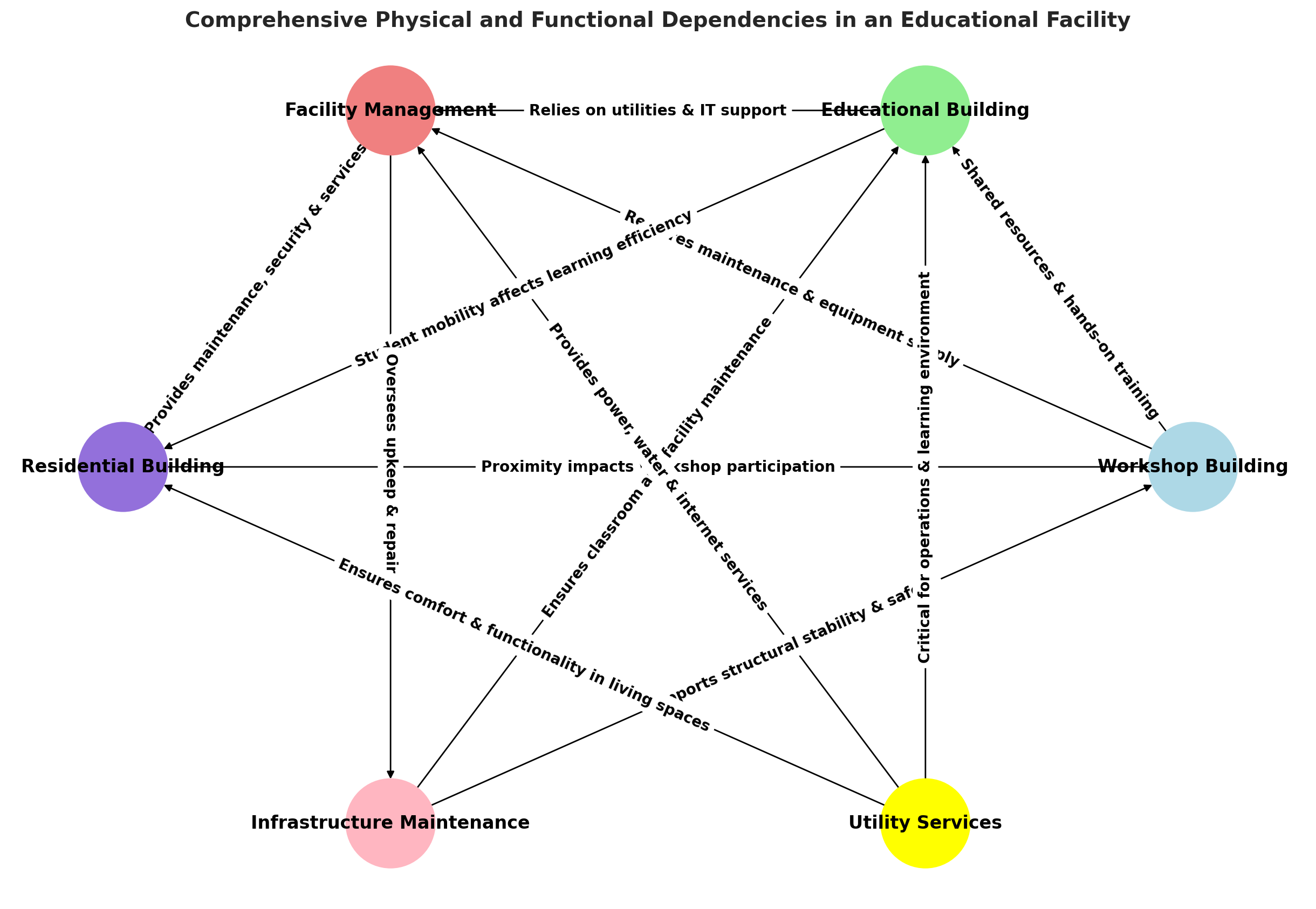Educational facility infrastructure consists of multiple interfaces between systems, each critical to supporting academic, residential, and operational purposes. The interactions among these systems significantly influence their efficiency, maintenance needs, and overall functionality throughout their lifecycle.
This project focuses on integrating four key building systems within an educational facility:
- Workshop Building (Concrete Structure) – Serves as a practical learning and training facility for hands-on education.
- Educational Building (High-Rise Structure) – The central hub for academic activities, including classrooms, lecture halls, and faculty offices.
- Facility Management Building – Provides essential operational support, including administration, utilities, and maintenance services.
- Residential Building (Student Accommodation) – Houses students, providing living spaces that are integrated with academic and facility management systems.
The goal is to analyze the interdependencies among these systems, assess the impact of maintenance strategies, and develop an optimized management plan that minimizes operational disruptions while ensuring sustainability, safety, and efficiency.
1. Workshop Building & Educational Building
The workshop and educational buildings share infrastructure, such as laboratories and technical equipment. Any structural or equipment failure in the workshop can disrupt hands-on training, affecting students’ practical learning.
Poorly planned access between buildings can lead to congestion and scheduling issues. Equipment, ventilation, and safety measures should be inspected regularly to align with academic needs and prevent disruptions.
2. Workshop Building & Facility Management
Inadequate management can compromise safety and functionality. Poor maintenance can cause equipment failures and accidents, disrupting training. Without proper ventilation and waste handling, safety risks increase. Scheduled inspections and compliance with safety regulations ensure uninterrupted operations.
3. Educational Building & Facility Management
The educational building depends on facility management for classroom upkeep, IT infrastructure, and utilities. Failures in lighting, climate control, or internet services can disrupt learning. Poor ventilation or internet outages hinder academic activities. Routine facility inspections and IT infrastructure upgrades should align with academic schedules to minimize disruptions.
4. Educational Building & Residential Building
Student movement from the residential building to classrooms depends on proper pathways, lighting, and transport. Poorly maintained routes or facilities affect learning. Delays in commuting impact attendance, while poor dormitory study conditions force students to overcrowded classrooms. Lights, accessible pathways and high-speed internet enhance academic accessibility.
5. Residential Building & Facility Management
The residential building requires facility management for security, sanitation, and essential utilities. Faulty plumbing, security breaches, or poor maintenance create discomfort. Poor living conditions distract students, affecting their academic performance and well-being. Regular plumbing, waste disposal, and security checks ensure a healthy and secure residential environment.
6. Residential Building & Workshop Building
The proximity of dormitories affects workshop accessibility. Long distances or poor pathways reduce student engagement in practical sessions. Well-maintained transport routes and clear scheduling improve student participation.
